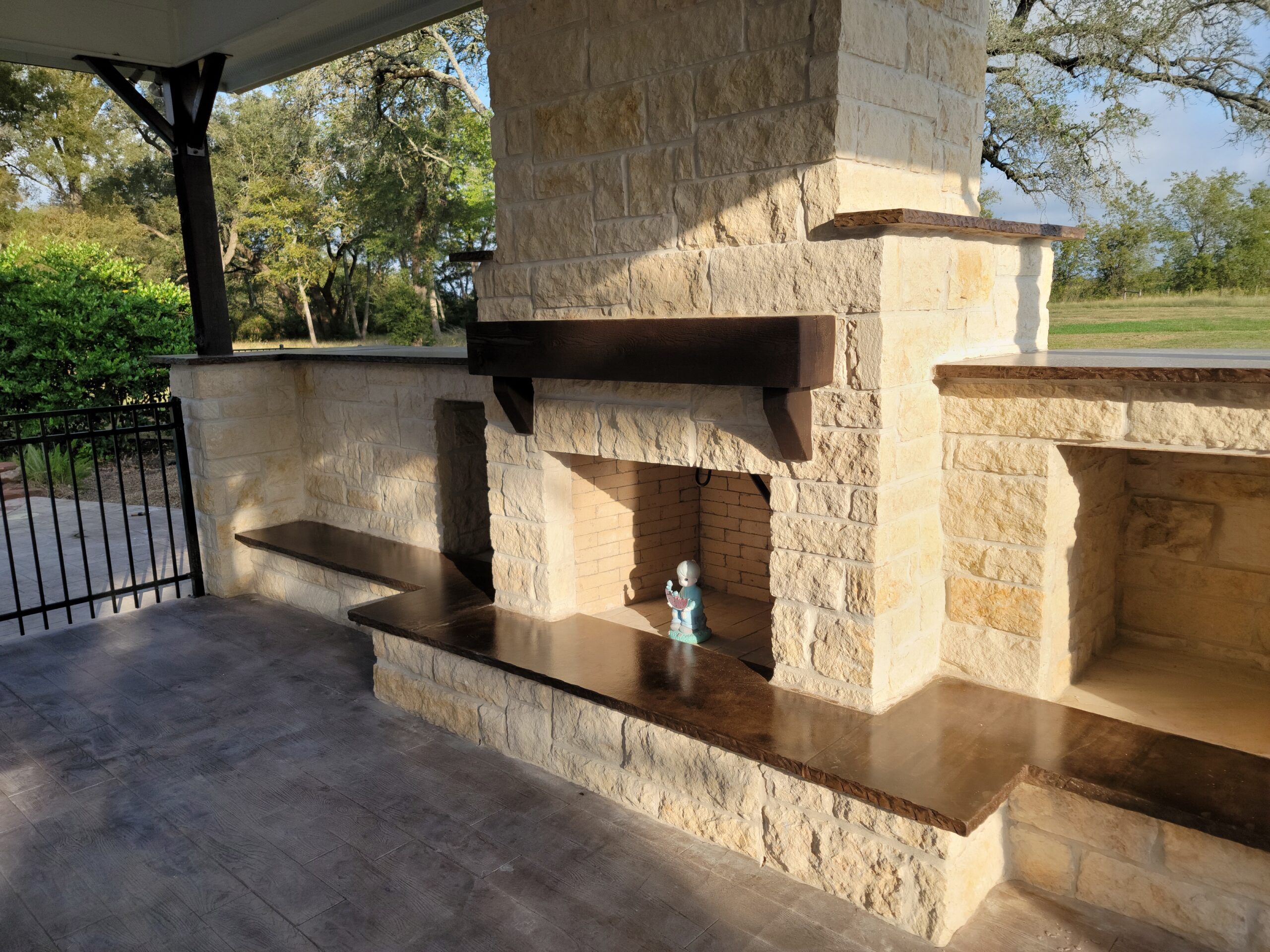There are many different techniques used in masonry work, but overall, there are two main types of stone masonry.
We’ve already discussed the first type, Rubble Masonry, in a previous blog post. If you want to learn more about it, you can check it out here!
The second type is Ashlar Masonry, and there are different subtypes that also fall under this category.
The stones used for ashlar masonry are “dressed,” meaning they have been chiseled to a specific shape and smoothed. These stones are laid in place and secured with mortar, or cement. The main characteristic of ashlar masonry is the fact that the stones used for it are cut to specific sizes and dimensions, giving you more control over how big or small the gaps and joints are when the stones are placed.
Ashlar masonry is often a bit more expensive than rubble masonry since the stones have to be cut to size.
Like previously mentioned, there are subtypes of ashlar masonry: rough-tooled, chamfered, quarry-faced, ashlar facing, block in course, fine-tooled, and random course.
- Rough-Tooled Ashlar Masonry
In this type of ashlar masonry, the stones are cut to specific heights, widths, and angels to fit together, but the faces of the stones are left mostly unfinished. They might be shaped slightly with a chisel, but overall are rough and bumpy to add a rustic look.
- Chamfered Ashlar Masonry
The main aspect of this type of ashlar masonry is that the stones are cut into uniform bricks of all the same sizes. The faces are also smoothed down more, though they still aren’t quite perfect. This style is much more refined than other styles and takes on the appearance of regular brick masonry.
- Quarry-Face Ashlar Masonry
This type of masonry is quite similar to chamfered in that the bricks are all shaved into specific, mostly uniform shapes. The difference, though, is that the faces of the stones aren’t smoothed at all. They’re left in their raw, bumpy form, giving the structure they’re used on a tough aesthetic.
- Ashlar Facing Masonry
Ashlar facing masonry is quite similar to chamfered, but regular bricks are used for the main part of the wall or other structure, and the edges are the actual ashlar facing, which act as a stone cover. This is a very dramatic look and combines both bricks and stone masonry.
- Block in Course Ashlar Masonry
Block in course masonry works to combine both rubble and ashlar masonry. The way this is done is by using the specifically cut stones of ashlar for the visible part of the structure, while everything behind it is rubble masonry stones. This allows for a more affordable product, while still allowing the homeowner to get the beautiful and structured look of ashlar masonry.
- Fine-Tooled Ashlar Masonry
Stones that have been cut to specific shapes and sizes are used in this masonry, and the joints of mortar connecting the stone bricks are incredibly thin. This allows for a very strong and smooth look to a structure.
- Random Course Ashlar Masonry
To create a very rustic, but reserved look, laying smoothed but variously sized and shaped stones in random patterns avoiding any major mortar joints is the way to go. This random patterning is aptly named random course ashlar masonry.
As was mentioned in the rubble masonry blog, there are pros and cons to using any building material.
The main cons for ashlar masonry are related to pricing and masonry skill level. Since it takes such a highly skilled mason to properly file down the stones, the price raises quite a bit.
Though there are many more pros for using this sort of masonry. It’s extremely versatile, what with all the different subtypes you can use. Even with a rougher finish, overall, the final look of your structure is going to be very neat and polished. This will work great on fireplaces, homes, or even the columns of your covered patio.
Using stone masonry is great for protecting against fire, which is one of the biggest benefits of it and why it’s often used for indoor or outdoor fire features. Stone also has a very long life and is incredibly durable against the elements. You won’t have to worry about repairs or replacing anywhere near as often as you might with other building materials.
Whether you want to utilize our ashlar masonry services, or if you have some other project in mind, College Station Covered Porch and Outdoor Kitchens is here to serve! Simply give us a call or fill out the form on our contact page to get in touch with us for your free estimate!


Comments are closed